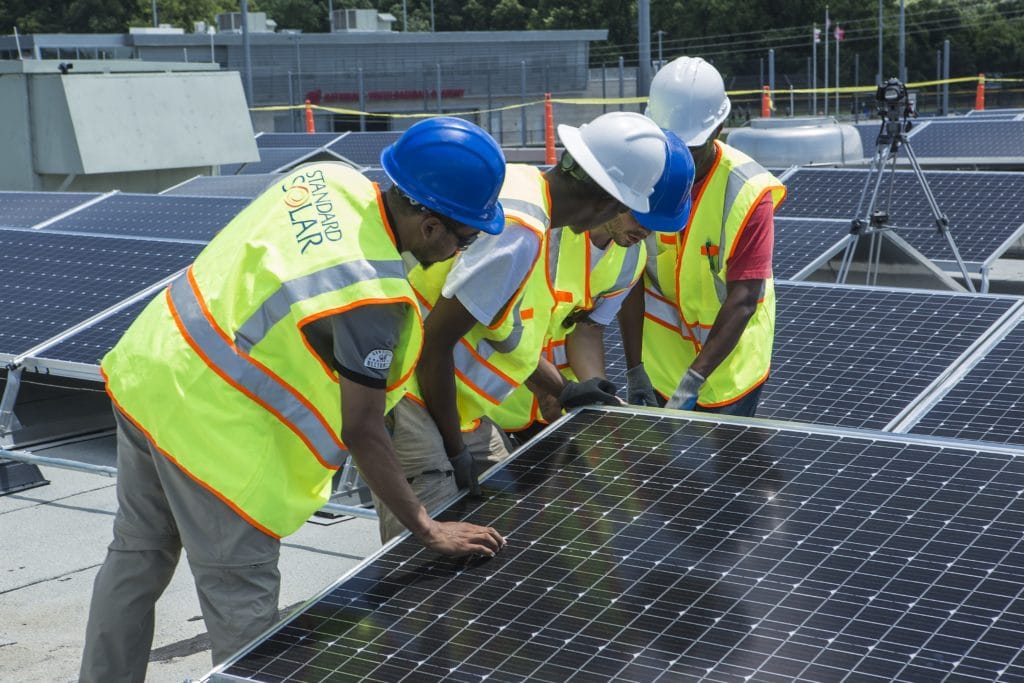The U.S. clean energy industry can no longer avoid confronting racial inequality in the sector by focusing more narrowly on improving access and opportunity for low- and moderate-income (LMI) communities or by suggesting that race is a distraction from work on LMI issues.
In other words, the U.S. transition to clean energy must be as much about equity as it is about electrons. The first steps toward these more thorough-going changes include uncompromising conversations such as a recent webinar on race and energy, hosted by Pecan Street, an energy research firm based in Austin, Texas. Calls to action during the hour-long session centered on both personal and organizational responsibility, with speakers posing hard questions and not mincing words.
“It’s sometimes easier to talk about disadvantage from the perspective of socioeconomic status,” said Diana Hernández, assistant professor of sociomedical sciences at Columbia University. “This way of framing the problem is used as code for communities of color. Our unique history doesn’t allow us to ignore the issue of race, even though it’s sometimes convenient, and feels better than to talk about it directly.”
The figures from the Solar Foundation’s 2019 Industry Diversity Study back up the need for a direct approach. Survey results showed that 88% of senior executives in the solar industry were white men; but only 36% of solar companies were tracking employee diversity.
An even slimmer 24% had strategies in place for increasing the number of people of color on their staffs. Meanwhile, only 8% of the solar workforce was African American versus 12% of the U.S. workforce overall.
Such figures reflect “the cost of silence on specifically calling out race, while attempting to use proxies like low-income to solve problems that are in fact rooted in institutional racism,” said Fisayo Fadelu, chief financial officer and general counsel for Pecan Street. “The core of the problem is not acknowledged; we miss the target.”
Both Fadelu and Hernández said solutions must be intentional and provide multiple levels of justice, from recognition of and respect for diversity to ensuring equal participation and righting past wrongs.
“Racism has allowed us to not situate our own selves in the reality of racism and its insidious nature in our society,” Hernández said. “I ask you to really ask yourself, why is it sometimes difficult to pinpoint race as an important metric and target in your own work as a policy maker, as a practitioner in this space? Does my company, operation, this policy plan I am designing somehow unduly burden people of color?”
Focusing on racial energy equity
The racial inequities of the solar marketplace have, similarly, been circumvented by the industry’s framing of them as LMI issues, said Dana Harmon, executive director of the Texas Energy Poverty Research Institute (TEPRI).
“We know that race and energy poverty are inextricably linked. We know that African American, Latino and indigenous communities suffer disproportionately from energy poverty,” Harmon said, citing a familiar list of problems. Communities of color are more likely to pay a greater proportion of their incomes for energy, live in older, energy-inefficient housing and have few if any financing options for home energy upgrades and solar, she said.
TEPRI’s work does largely frame energy issues in terms of socioeconomic measures, including income, she said, but “we really haven’t focused on racial equity in energy enough.
“As we are working with key stakeholders on issues of energy poverty, we should also be using that same platform to raise awareness on issues of racial energy equity, including specifically addressing disparities we know exist,” Harmon said. ”What data might we need that we don’t yet have? What would it take to build a system where race was no longer a predictor of energy poverty?”
At least part of the solution lies in increasing the numbers of African Americans and other people of color in the clean energy workforce and pushing past the industry’s claims about lack of qualified candidates.
Harmon acknowledged that when TEPRI posts jobs, especially for high-level positions, most applicants are white. A range of strategies will be needed to build a more diverse and equitable pipeline, she said, including extensive outreach to organizations such as historically black colleges and solid investments in leadership development.
John Hall, director of regulatory and legislative affairs for the Environmental Defense Fund in Texas, sees such work as a critical differentiator for clean energy companies, especially in places like the Lone Star State, which also have strong fossil fuel industries.
Solar, wind and other clean technologies have “an economic self-interest in doing what they are currently not doing,” he said. “If they actually place as much emphasis on extending clean energy to communities of color, they’d make a hell of a lot more money.”
But Hall cautioned, “Unless they are proactive, they will find themselves in the same position that we often criticize the fossil fuel companies for. They are providing great jobs, but communities of color, African Americans in particular, are not participating in the benefits.”
A recording of Pecan Street’s Aug. 5 Race and Energy webinar can be found on the group’s YouTube channel here.
This content is protected by copyright and may not be reused. If you want to cooperate with us and would like to reuse some of our content, please contact: editors@pv-magazine.com.








Clean energy is the only way to essay our planet and when people are faster than this and begin to take care of it, the faster we can do something for this until they completely destroyed everything
Honestly thank you so much for your page. I’ve perused all kinds of topics on your channel, and I always thoroughly enjoy all of your content.